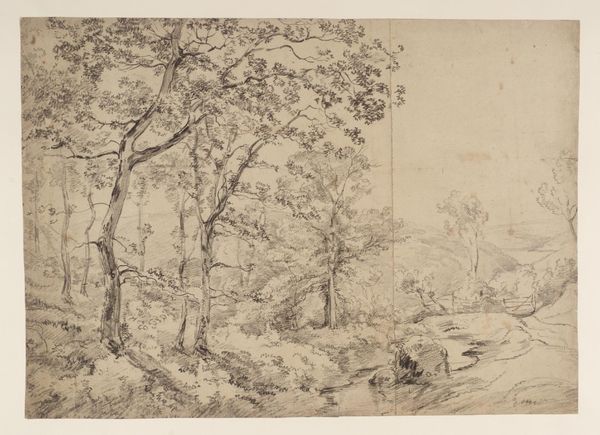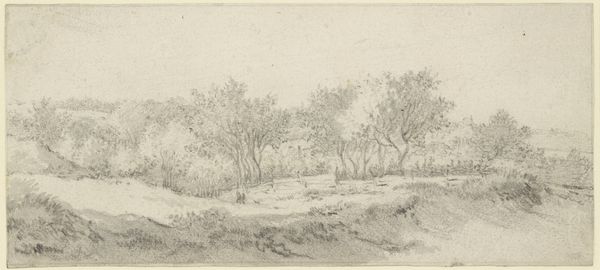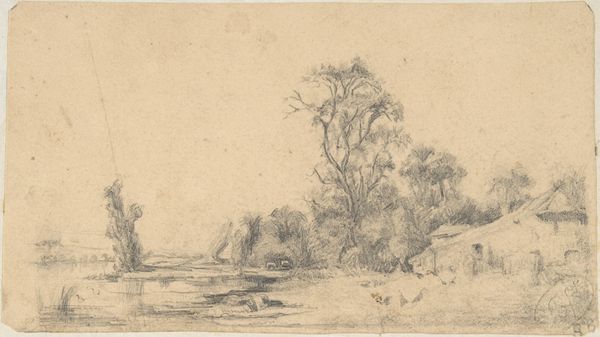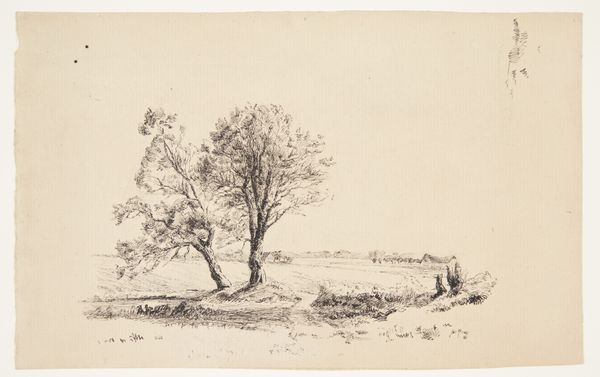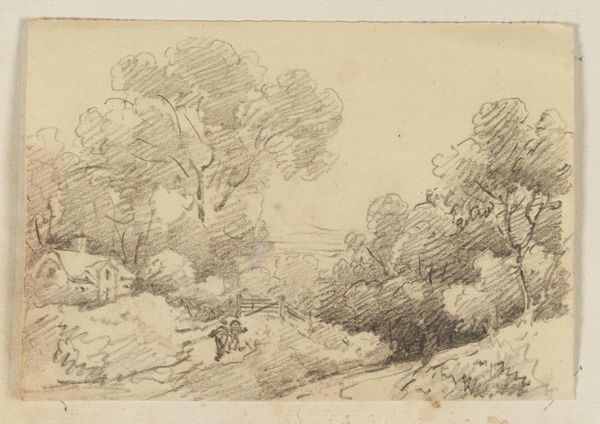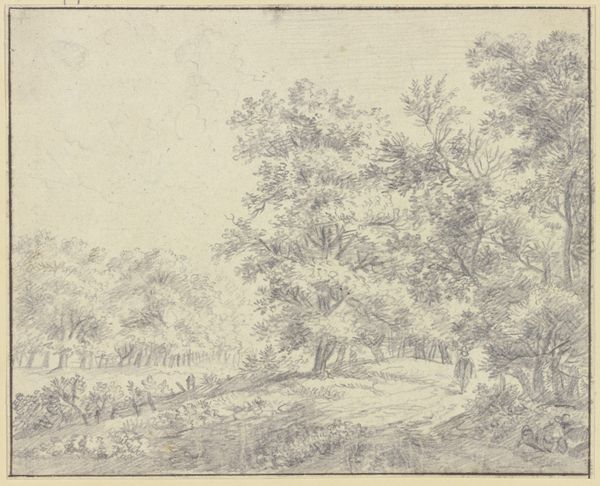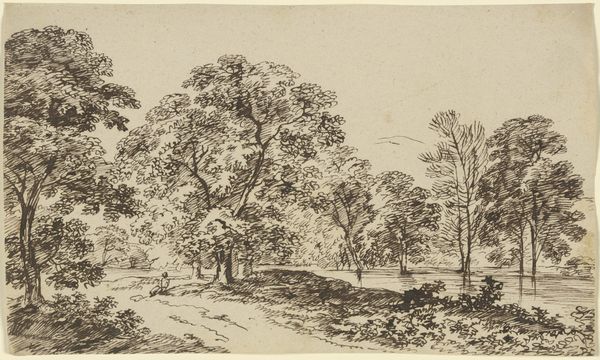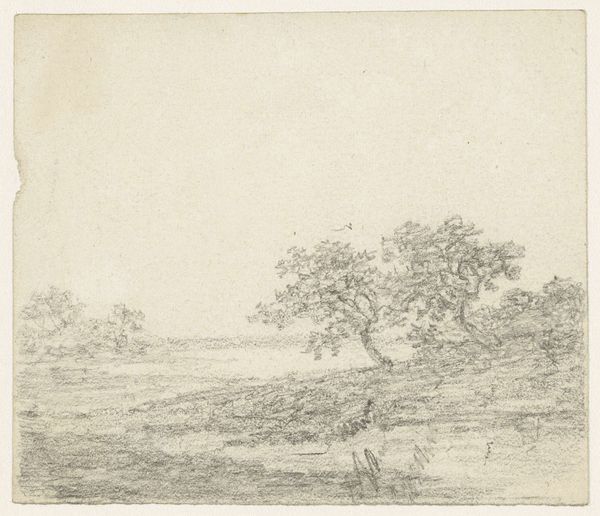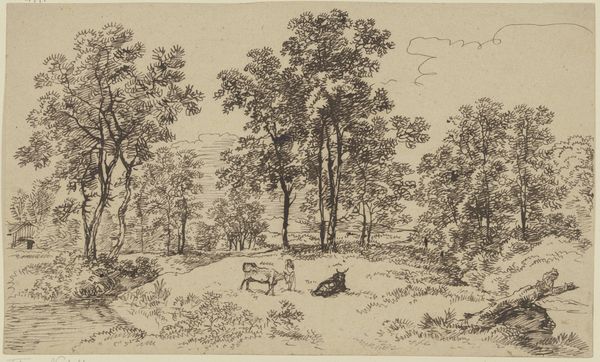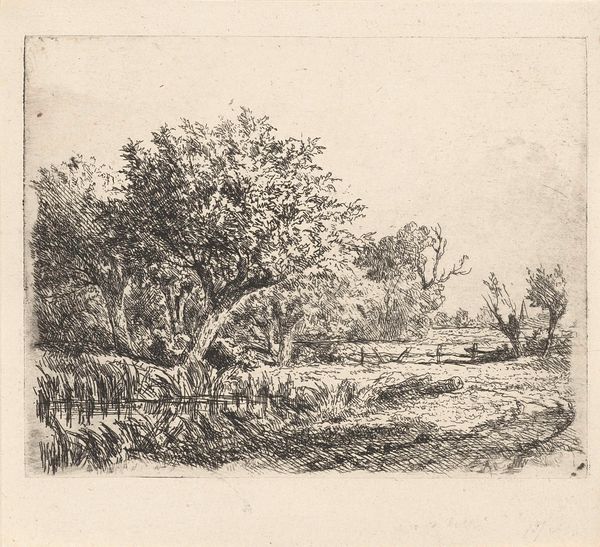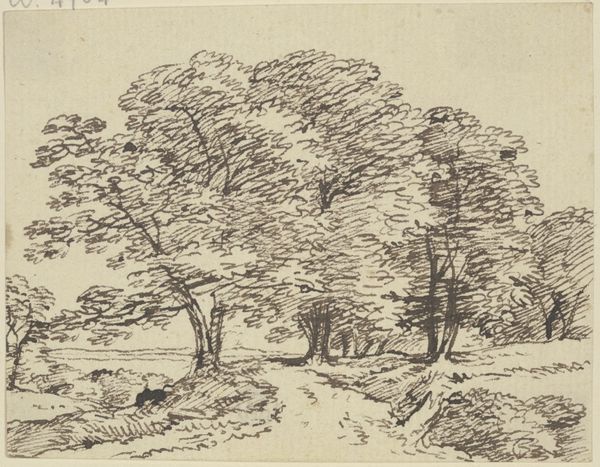
drawing, etching, ink, pen
#
drawing
#
ink drawing
#
pen sketch
#
etching
#
landscape
#
etching
#
ink
#
romanticism
#
pen
Copyright: Public Domain
Editor: Here we have Franz Kobell's "Kahle Bäume an einem Gewässer," a landscape executed around 1797 using ink and etching techniques. It’s stark, almost skeletal; those bare trees are quite striking against the muted tones. What story do you think Kobell is trying to tell here? Curator: It's less about a singular "story" and more about tapping into a broader cultural and historical unease. Consider the Romantic era's fascination with nature. It wasn’t always celebratory. Look at the vulnerability expressed by the bare trees in relation to the body of water - What if we interpret that, through a feminist lens, as symbolic of a loss of innocence, a commentary on societal expectations imposed on women during that time? Editor: Interesting! So, the starkness isn't just aesthetic; it’s a reflection of something deeper? Curator: Precisely. And consider the social climate of the late 18th century – revolutions, shifting power dynamics. How might the seeming emptiness of the landscape speak to feelings of instability, precarity, or even a critique of structures beginning to erode? Who is being excluded from this picture? Is there a commentary on resource accessibility given the lack of vibrant flora? Editor: I hadn't thought about it in terms of political upheaval. I was so focused on the trees themselves. The lack of vibrant colours feels less like an artistic choice now and more like a deliberate omission, highlighting what's absent. Curator: Exactly. By interrogating what seems to be missing, we start to uncover a richer understanding of the work and its place in a larger sociopolitical landscape. Art becomes a site of resistance or reinforcement. Editor: I see it so differently now! It's less of a serene landscape and more of a quiet commentary. Curator: And that shift in perspective is what makes art history so powerful. The drawing reveals hidden cultural attitudes once we actively investigate those narratives.
Comments
No comments
Be the first to comment and join the conversation on the ultimate creative platform.
